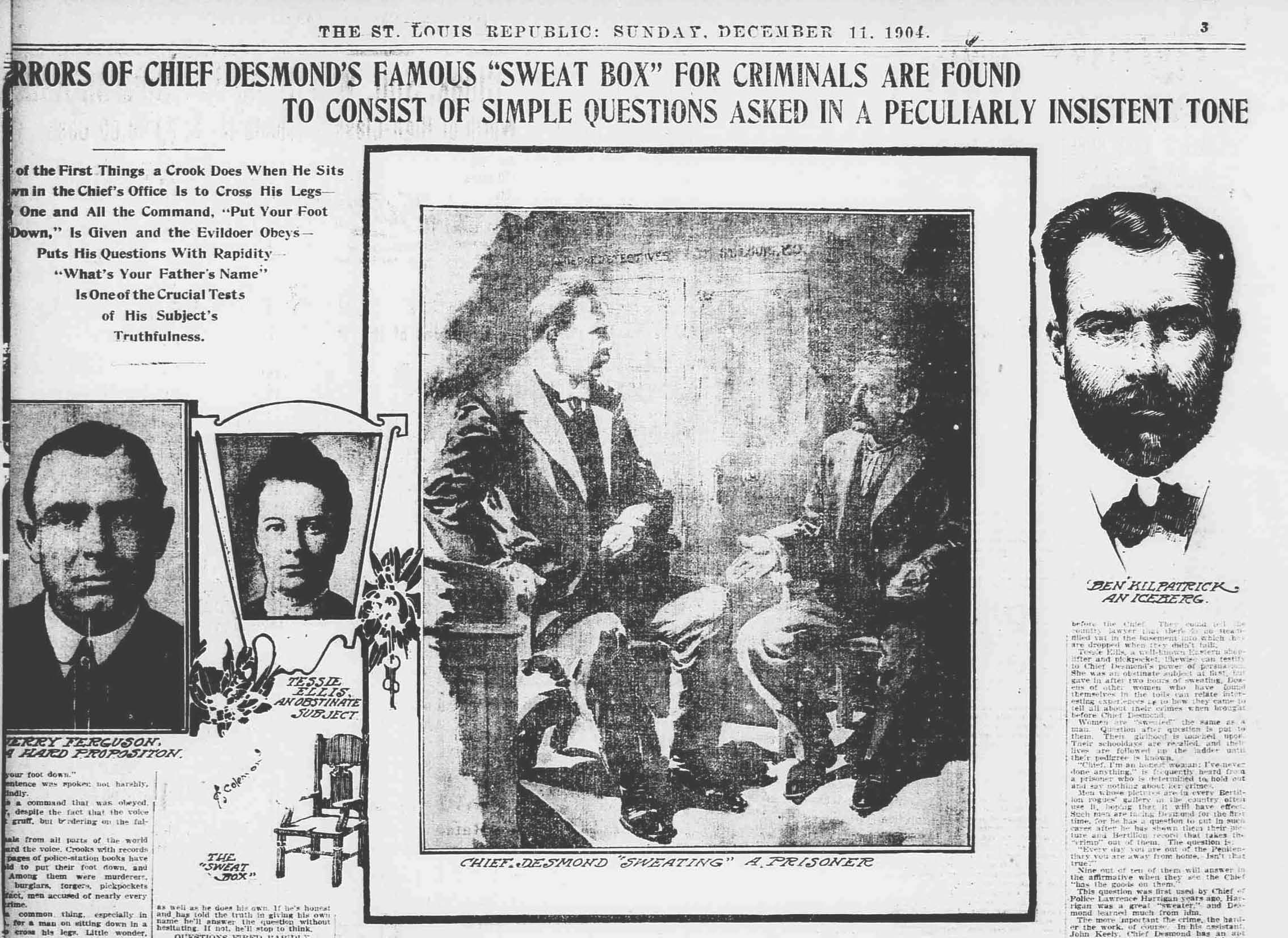Chief Desmond Driven From Office
“For the good of the department”. With those 6 ord, St. Louis Board of Police Commissioners removed St. Louis Chief of Detectives William Desmond from the position he held for 17 år. They replaced him with Desmond’s ex-assistant James Smith, who was dismissed by the previous board.
How did one of the greatest, if not the greatest, detectives in St. Louis Police history with an impeccable reputation for honesty end up so ignobly demoted in an unfair action that would shortly lead to his retirement? The dismissal was political and had its origins in the “boodling” investigation of 1902-1904.

Chief Desmonds svedtendens af mistænkte fra St. Louis Republik
Joseph W. “Holy Joe” Folk served as an attorney during the 1900 St. Louis Streetcar Strike. Folk was disgusted by the tactics of some of St. Louis’ business elite during the strike. After Folk was elected St. Louis Circuit Attorney, he started investigating corruption between businessman and St. Louis politicians.
Folk felt his investigation was sometimes hindered by the actions of the St. Louis Police Department, who were under state control. The governor appointed the members of St. Louis Board of Police Commissioners.
The Board of Police Commissioners seated during the “boodling” investigations was not friendly to Folk and his investigation. They frequently interfered by giving contradictory orders to individual police officers, who they summoned through the St. Louis Police command staff.

Artist rendering of St. Louis Chief of Detectives William Desmond from the Public Domain
Men, Chief Desmond did not obey the board and did work with “Holy Joe”. Desmond personally traveled to Mexico and brought back one of the city legislators, who fled there to escape prosecution in 1902. Desmond brought the man back despite preparing for his upcoming wedding in January 1904.
When Folk won the Missouri Governor’s race in 1905 based on his record as Circuit Attorney, he did not forget the interference from the Board of Police Commissioners. It took him almost a year and a half but he replaced enough members with his own team to remake the department.
Not satisfied with removing the Police Commissioners, who obstructed him, Folk ordered his appointees to remove anyone he saw as interfering with his investigation. Folk’s puritan zeal would bring Desmond into the cross-hairs of the new board.
The Board of Police Commissioners ordered Desmond to remove 15 til 20 detectives, who they believed interfered with the “boodling” investigation or were corrupt. Desmond didn’t agree with this assessment. He was also told by Chief Kiely not to remove anyone he wasn’t convinced was corrupt.
Neither Kiely nor Desmond felt a rank-and-file officer should be fired for following orders from the Board of Police Commissioners. The Board could bring the men up on charges and have them dismissed. As long as they didn’t take money for their actions, it wasn’t felt they should be fired. Despite their long records including bringing St. Louis safely through the 1904 Verdensudstillingen, their failure to scapegoat the officers led to their dismissal.
The Board of Police Commissioners first asked Chief Mathew Kiely for his resignation. At first, they were slow to do the same to Chief Desmond. Den January 21, 1907, the Board met and was expected to ask for Desmond’s resignation. Men, a public outcry led them to leave him in his position. The board intended to remove him in September 1907, when his reappointment would be due.
Four days later, most likely after Folk changed their mind, the Board of Police Commissioners requested Desmond’s resignation. Desmond resigned as Chief of Detectives and was reassigned the rank of Lieutenant. The Board intended to promote him to Captain, which it did before he resigned a few months later. This unfair and ignominious end to his career haunted Desmond for the remainder of his life.
As it would turn out, losing Desmond was definitely not “for the good of the department”. The department did not improve because Chief Desmond left. Lucky for St. Louis, Desmond was railroaded after the 1904 Verdensudstillingen, where he oversaw the police and security operation in an exemplary manner. His men arrested over 300 pickpockets alone.
You can leave a comment or ask a question about this or any post in the comment section below, on my Facebook page.
Sources: St. Louis Post-Dispatch, Januar 21, 1907 udgave, p.1 and January 26, 1907 udgave, p. 1-2
Pin It


